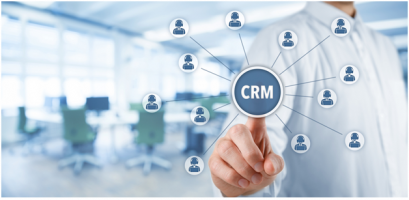Thanks to CRM software, sales professionals now have a whole new arsenal of tools to identify and catalogue new prospects, nurture leads and improve efficiency.
But for every one of the benefits of CRM, there is also a potential drawback. CRM software in the hands of untrained or inexperienced users can generate some costly mistakes. In this article, make sure your sales staff is not making these eight all-too-common CRM mistakes!

Mistake 1: Allowing IT staff to take the lead on implementation.
It may seem like a slam-dunk decision to hand over implementation of a newly selected CRM software program to the IT department.
However, while the IT department must oversee installation and configuration to the point that it may affect the organization’s data security and user permissions, it is the end users – the sales staff – who need to take an active, hands-on role in early implementation of software modules.
Sales staff should be able to decide which modules to implement first. By allowing the end users to select which modules to adopt first and when and how to wrap in additional modules, you can ensure that adoption of CRM software enhances rather than detracts from sales department productivity.
Mistake 2: Failing to integrate relevant third party tools.
Today’s CRM tools are designed to enhance overall productivity by minimizing time spent on manual repetitive tasks. For instance, just having to manually copy and paste a prospect’s email address from the CRM software portal over to the email program can quickly become a huge waste of time, energy and productivity.
The best CRM software today offers integration optionswith popular third-party tools such as email providers. Integrating CRM with these pre-existing third-party tools helps to reveal the full benefits of crm software and encourage full adoption by end users.
Mistake 3: Implementing a non-scalable CRM software package.
Here, the word “scalable” refers to a software package’s ability to grow with your company as it grows.
Before implementing any CRM software package, be sure that one of the benefits of crm systemoperation is that it can grow at least to the extent that you visualize your own business growth proceeding.
Mistake 4: Adopting a CRM package that isn’t mobile-friendly.
For most companies, the staff that would be voted most likely to be out of the office on any given day tend to be the sales staff. And this is great – this is what that job often requires. Sales staff should be given tools that allow for maximum face time with customers. Such tools today must be mobile-friendly to enhance sales staff productivity.
Software that is worth its price tag in terms of the benefits of CRM must be fully accessible to sales staff when in the office and remotely (at sales calls, at home, on the road traveling, et al).
Mistake 5: Failing to provide adequate, comprehensive CRM training for end users.
Even the most user-friendly CRM software tools will come with an unavoidable learning curve attached. In actuality, the learning curve is often twofold: sales staff must relinquish trusted, time-tested processes that they have mastered and then must also learn new processes from scratch.
This can be a very frustrating process even if CRM software is introduced during a slow period in the sales year. Without effective, adequate ground-up training, sales staff may resist using the new CRM tools in favor of sticking with what they know.
Here, some of the best training results in the benefits of CRM can be seen from more interactive sessions that wrap in techniques from gaming and virtual reality. These training tools allow for hands-on practice use of the software to give sales staff immediate confidence in using the new software.
Mistake 6: Failure to reward sales staff for adoption of the new CRM software.
Because in the beginning, training on a new software tool will disrupt sales staff’s normal daily routines, rewards, recognition and positive reinforcement are absolutely essential to success. In most cases, just citing the benefits of crm system use or even demonstrating them in hands-on training sessions will not be enough on its own to ensure adoption by end users.
For this reason, instituting some type of reward and recognition system that highlights key benefits of crm software for users that embrace it can be critical. Best practices suggest tying rewards to measurable results that stem from adoption of CRM software for maximum results.
Mistake 7: Not emphasizing the importance of accurate data entry.
Offering a standardized approach that can harness the full benefits of CRM system use ultimately speaks to every business’s best interests. But without accurate, detailed data entry on a daily basis, the stored data becomes degraded and less useful.
In order to realize the full benefits of CRM, it is essential to train sales staff and administrative support staff in how to input datawith precision and care. The goal is to ensure the data available via the CRM software system can be useful across multiple departments and job functions as a tool to increase efficiency and productivity.
Mistake 8: Using CRM software in a generic manner.
CRM implementation experts state that the most powerful benefits of CRM software can be realized when it is used to deepen and further personalize sales staff-customer relationships. Using CRM in a generic manner for mass communications can be a huge turnoff for prospects and customers alike, and can actually harm business.
By carefully avoiding these eight common CRM software mistakes, your company can ensure that CRM implementation and adoption by end users is as smooth and seamless as possible.

